
Краткосрочный план внеклассного урока «День Земли»
|
Date: 19. 04.2018 |
Form: 5 «Г» |
Subject: English |
||||||
|
The theme |
Earth Day |
|||||||
|
Links |
Internet resources |
|||||||
|
Aims |
to enrich their vocabulary to develop their speech activity using modal verb “should/shouldn’t” to develop their feelings towards a pure land on which we live to develop pupils’ skills of listening and speaking and critical thinking; |
|||||||
|
The expected result |
Students will enrich their knowledge about the problems of nature; they will practise working in groups and will understand the importance of the environment; they will express their opinion on the theme. |
|||||||
|
Exercises |
1. Warm-up 2. Catch the question |
3. Group work 4. “2 stars and a wish” evaluation |
5. Reflexion “Ship” |
|||||
|
Resources and aids |
1. PowerPoint presentation 2. Worksheets
|
|||||||
|
The stages of work |
Teacher’s activity |
Students’ activity |
|
|||||
|
Organization moment |
- Good morning, boys and girls! Sit down, please. Glad to see you. How are you? You are going to have an unusual extracurricular lesson. Now let’s make a circle and greet each other. Say your best wishes. - Teacher offers to pupils to choose one picture and divides them into 2 groups. 1 – “Earth” 2 – “Water”
|
Pupils greet each other I wish you success! I wish you luck! I wish you health! I wish you happiness! Be pretty! Be boldness! Be modest! Be powerful. Be clever! Be honesty! Be beautiful! Be handsome!
Pupils choose pictures and according to it they are divided into 2 groups.
|
|
|||||
|
N E W
L E S S O N
|
Presentation of new theme Catch the question
|
- Now let’s watch the film “Home” by Luc Besson http://www.youtube.com/watch?v=G8IozVfph7I (slide 1) And let’s talk about this film. What does it tell you about? Teacher throws a ball and ask the questions. 1. We live on a beautiful planet. What is its name? 2. What colour is our earth? 3. Why is it called « a blue planet»? 4. What are there on the planet? 5. How many continents do you know?’ - Very good! So today our theme is The Earth Day. (slide 2)
|
The student who catches a ball and answer the question - It tells us about Nature. - It tells us about wild animals. - We see our planet. - It is beautiful. It is green. - The wild animals are beautiful. - We see oceans and seas. - The oceans are beautiful. - Its name is Earth. - Our planet is blue because there is a lot of water. - There are continents and oceans, mountains and rivers. They guess the theme of the lesson |
|
||||
|
Vocabulary work |
Vocabulary work (slides 3-13) rubbish bin, environment, litter, human being, throw into, pollute, prohibit, recycle, reuse, waste water/energy, protect, throwaway |
Pupils are introduced with new words, repeat after the teacher and practice the pronunciation |
|
|||||
|
Working with text |
Reading the text (slide 14-17) On the 22nd of April we celebrate The Earth Day. It was founded by U.S. Senator Gaylord Nelson in 1970. Now this holiday is popular in many countries of the world. Earth Day is a very special day. On this day, people think about air, water to drink, food, animals and plants. Earth Day is also the time to remember that we share the Earth, our home, with millions of other plants and animals. Some people’s activities do a lot of harm to the forests. People cut down trees to build farms, homes and roads. Many animals and plants lose their homes.
|
Pupils read the text, translate it and answer the questions |
|
|||||
|
Group work Task 1
|
Teacher gives to the groups the worksheets “Save the world” (slide 18) People should / shouldn’t
|
Pupils do the tasks in group and then change their works with another group for checking each other
|
|
|||||
|
Task 2 |
“Environment signs” Match the signs with their definitions (slide 19)
|
|
||||||
|
Evaluation “Traffic lights” |
|
They evaluate each other by this method |
|
|||||
|
|
Playing the game “Build a letter or number” Teacher says any letter or number. |
Pupils should quickly form it while teacher counts till 10. |
|
|||||
|
Task 3 Gabage disposal |
- Over 160 million tons of garbage is produced every year. Ten percent is recycled, ten percent is burned, and the rest is put in landfills. A city that has solved this problem in an unusual way is, Machida, in Tokyo, Japan. They have developed totally a new approach to garbage disposal. Families must divide their garbage into categories. 1. garbage that can be easily burned (that is, combustible garbage), such as kitchen and garden trash; 2. noncombustible garbage, such as small electrical appliances, plastic tools, and plastic toys; 3. products that are poisonous or that cause pollution, such as batteries; 4. bottles and glass containers that can be recycled; 5. metal containers that can be recycled. (slides 20-24) - We have some containers. Please throw litter and say why you do it.
|
|
|
|||||
|
Each group divides the litter into litter bins - I throw bottles in this containers, this litter will be recycled, etc.
|
|
|||||||
|
Conclusion of the lesson Reflexion “Ship” |
Gives them ships to paint them
|
They paint the sails of ship Green - if they like and manage to do all the task; Yellow – if they had a little difficulties with tasks; Red – if they had some difficulties and needed the teacher’s help. |
|
|||||
Рефлексия
Урок «Earth Day» был проведен в 5 «Г» классе, 19 апреля 2018 года. Планируя урок, я старалась интегрировать идеи модулей Программы, при этом основным являлся модуль «Обучение критическому мышлению». Урок состоял из трёх стадий: вызов, осмысление и рефлексия. Которые состояли из приёмов и методов, помогающих развитию у учащихся навыков критического мышления.
Ожидаемыми результатами от данного урока были: умеют составлять предложения при помощи Should/shouldn’t с использованием новой лексике по теме. Демонстрируют разговор по теме с использованием лексического материала урока. Кроме обучающей цели урока, я так же ставила цели и перед собой, так как считаю важным способствовать развитию у учеников критического мышления, учить их работать в паре, вести диалог, научить «добывать» знания самостоятельно, дать важную информацию, касающейся экологии и охране природы.
На первом этапе урока, для включения каждого ученика в учебный и плодотворный процесс и положительно настроить учащихся была создана коллаборативная среда в классе. Для этого я использовала прием «Круг радости», где учащиеся, взявшись за руки, говорили друг другу добрые пожелания как: «Доброе утро!» «Удачи на весь день!» на английском языке. Дети оживились, настроились на работу.
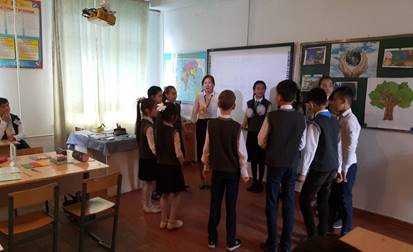
Деление на группы я выбрала метод «Мозайка», относящиеся на тему «Земля» и «Вода». В каждой группе получилось по 6 учащихся.
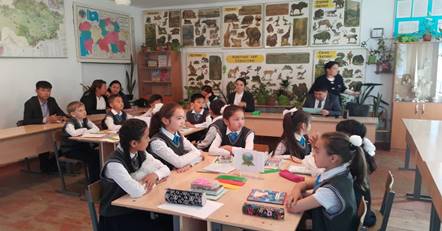
На следующем этапе урока стадии «Вызова» для самостоятельного определения темы урока было показано видео на английском языке, затем я использовала метод «Поймай вопрос» для раскрытия темы.
Работа с текстом. Практика учащихся в умении находить в тексте нужную информацию, а также ребятам была предложена групповая работа с использованием грамматики и нового лексического материала should/shouldn’t.
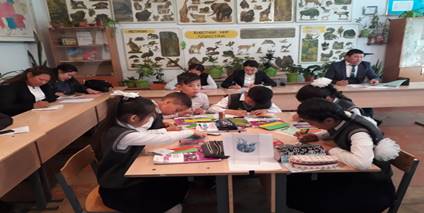
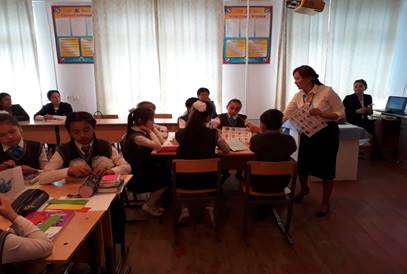
На этапе «Осмысление новой информации» ученики разбирали мусор, который заранее были приготовлены самими учениками, по категориям «Стекло», «Металл», «Бумага», «Пластик» и «Органические отходы».
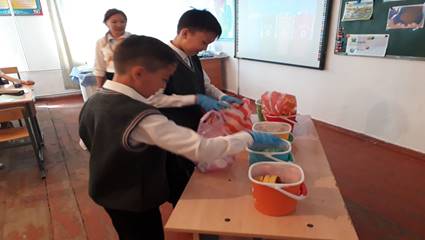
Не стоит забывать о восстанавливающей
силе релаксации на уроке. Ведь иногда нескольких минут достаточно, чтобы
встряхнуться, весело и активно расслабиться, восстановить энергию. Для этого я
употребила метод «Строим буквы, цифры».
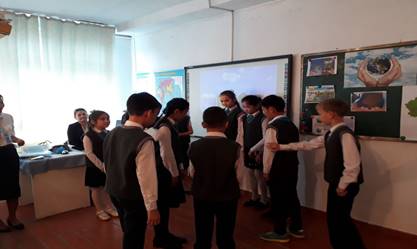
На этапе «Рефлексия» в конце урока был
использован метод «Кораблика», где учащимся предлагается раскрасить парус кораблика определенный цвет,
который отражает степень удовлетворенности своей работой.
Красный – цель не достигнута
Желтый – цель достигнута частично
Зелёный – цель достигнута полностью.
Эти методы помогают эффективно,
грамотно и интересно подвести итоги урока. Для учителя этот этап очень важен,
поскольку позволяет выяснить, что ребята усвоили хорошо, а на что необходимо
обратить внимание на следующем уроке. Кроме того, обратная связь от учеников
позволяет учителю скорректировать урок на будущее.
. В течение урока кроме оценивания по критериям, проводилось формативное оценивание учащимися по стратегии « Светофор».
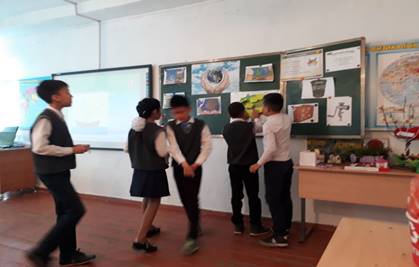
Я считаю, что урок продуман мной. Но думаю, что урок можно еще провести по-другому. Условия для внедрения модулей Программы созданы. Используемые формы работы, методы и приёмы способствовали достижению образовательных целей урока, стимулировали познавательные интересы учащихся. Вопросы и задания урока разработаны с учётом возрастных особенностей учеников. Ученики достигли поставленных целей.
«Общая средняя школа им. В.Комарова»
THE EARTH DAY
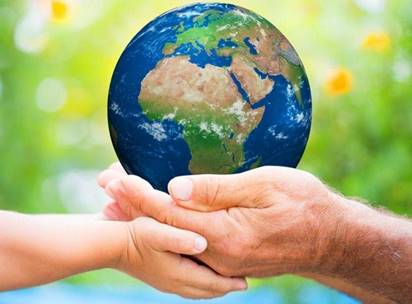
Учитель: Казиева Ж.К.
2017-2018 уч.год
Материалы на данной страницы взяты из открытых источников либо размещены пользователем в соответствии с договором-офертой сайта. Вы можете сообщить о нарушении.